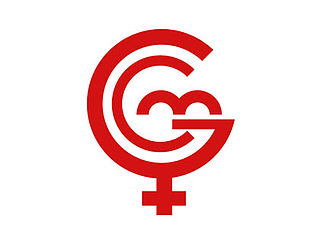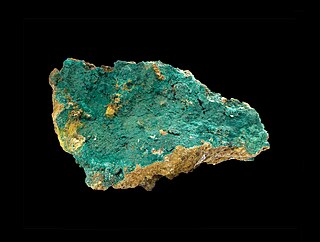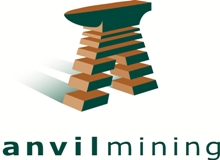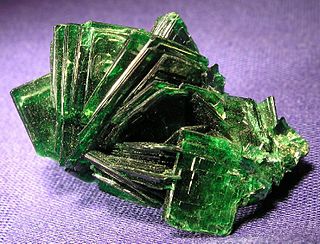
La Générale des Carrières et des Mines (Gécamines) is a Congolese commodity trading and mining company headquartered in Lubumbashi, in the Katanga region of the Democratic Republic of Congo. It is a state-controlled corporation founded in 1966 and a successor to the Union Minière du Haut-Katanga. Gecamines is engaged in the exploration, research, exploitation and production of mineral deposits including copper and cobalt.

Mining in Iran is still under development, yet the country is one of the most important mineral producers in the world, ranked among 15 major mineral-rich countries, holding some 68 types of minerals, 37 billion tonnes of proven reserves and more than 57 billion tonnes of potential reserves worth $770 billion in 2014. Mineral production contributes only 0.6 percent to the country's GDP. Add other mining-related industries and this figure increases to just four percent (2005). Many factors have contributed to this, namely lack of suitable infrastructure, legal barriers, exploration difficulties, and government control.

Konkola Copper Mines is a copper mining and smelting company in Zambia. It is 80% owned by Vedanta Resources, a mining conglomerate based in Mumbai and London.

The mining industry of the Democratic Republic of the Congo produces copper, diamonds, tantalum, tin, gold, and more than 63% of global cobalt production. Minerals and petroleum are central to the DRC's economy, making up more than 95% of the value of its exports.
Jinchuan Group Ltd. is a Chinese company based in Gansu. It produces the metals nickel, copper, cobalt, platinum, palladium, gold, silver and selenium. As of 2007 it has the capacity to produce 150,000 metric tons of refined nickel per year, producing 90% of China's output, and is the largest nickel producer in Asia. It produces 400,000 tons of copper per year, the fourth largest in China. The company reported that it would make a profit of 10 billion yuan in 2007 compared with 7.2 billion yuan in 2006, with sales of 50 billion yuan.

Kipushi Mine is an underground mine in the Democratic Republic of the Congo, near the town of Kipushi in Haut-Katanga Province.
Mining is an important industry in Pakistan. Pakistan has deposits of several minerals including coal, copper, gold, chromite, mineral salt, bauxite and several other minerals. There are also a variety of precious and semi-precious minerals that are also mined. These include peridot, aquamarine, topaz, ruby, emerald, rare-earth minerals bastnaesite and xenotime, sphene, tourmaline, and many varieties and types of quartz.

Anvil Mining was a copper producer that has been operating in the Democratic Republic of the Congo (DRC) from 2002 to 2012. The company headquarters were in Montreal, Quebec, Canada. Anvil was listed on the Toronto Stock Exchange and the Australian Stock Exchange. As of September 2011 its major shareholder was Trafigura Beheer.
Kinsevere is an open pit mine and Heavy Media Separation plant with an electric arc furnace formerly operated by Anvil Mining, and now operated by Minerals and Metals Group. It is located 30 kilometres (19 mi) north of Lubumbashi, Katanga Province, Democratic Republic of Congo.
Copper mining in the Democratic Republic of the Congo mainly takes place in the Copper Belt of the southern Katanga Province of the Democratic Republic of the Congo.

The Musonoi mine is a set of open-cut pits near Kolwezi from which copper and other metals have been extracted since the 1940s. The mining complex is located in the Lualaba Province of the Democratic Republic of the Congo. Kolwezi is about 320 kilometres (200 mi) northwest from Lubumbashi, the provincial capital.

Metorex is a mining company based in Johannesburg, South Africa. It has assets in the Democratic Republic of the Congo (DRC), Zambia and elsewhere. A takeover bid by the Jinchuan Group of China valued the company at US$1.1 billion. Since January 2012, the company is a wholly owned subsidiary of Jinchuan Group.
Tiger Resources Limited is an Australia-based mining company with two active copper extraction projects in the Democratic Republic of the Congo (DRC). The company was listed on the Australian Stock Exchange in May 1997. As of 2011 the company's market capitalization was about A$350 million.
The Kipoi Mine is a copper mine in Katanga Province of the Democratic Republic of the Congo with an inferred 306,000 tonnes of copper in high-grade ore.
The Ruashi Mine is an open-pit copper and cobalt mine operated by Metorex that is located about 10 kilometres (6.2 mi) from Lubumbashi in Katanga Province, Democratic Republic of the Congo. The project includes a plant to concentrate the ore from the Ruashi and Etoile mines, and a modern solvent extraction electrowinning (SX-EW) processing plant. As of 2008, annual capacity was estimated to be 10,000 tonnes of copper and 1,000 tonnes of Cobalt.
The Musoshi Mine is an underground copper mine in the Katanga Province of the Democratic Republic of the Congo. The mineral rights are owned by the South African miner Metorex.
The Kamoto Mine is an underground copper and cobalt mine to the west of Musonoi in the former Katanga Province, Democratic Republic of the Congo. As of 2022, the site is the largest active cobalt mine in the world. The mine includes the Luilu metallurgical plant, which accepts ore from KOV mine and Mashamba East mine. The plant has polluted the Luilu River, and tailings also pollute the region with wind-blown dust. The Kolwezi Tailings Project is an attempt to recover additional metal from these tailings.

The Luiswishi mine is an open cut copper and cobalt mine in Katanga Province of the Democratic Republic of the Congo (DRC).
Kalukundi Mine is a copper and cobalt mine being developed in Katanga Province, Democratic Republic of the Congo (DRC) by Africo Resources, a Canadian company. In September 2008 the company estimated the value of the resource as $1.47 billion.

The Central African Mining and Exploration Company plc (CAMEC) was a mining company active in the Katanga Province of the Democratic Republic of the Congo (DRC) and in other parts of Africa. It was acquired by Eurasian Natural Resources Corporation in 2009.










